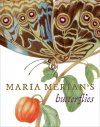Art / Photobook
Out of Print
By: Kate Heard(Author), Maria Sybilla Merian(Illustrator), George C McGavin(Foreword By)
192 pages, 150 colour & 1 b/w illustrations
![Maria Merian's Butterflies Maria Merian's Butterflies]()
Click to have a closer look
About this book
Related titles
About this book
Maria Sibylla Merian (1647–1717) trained as an artist under her stepfather in Nuremberg. Fascinated by butterflies and moths from an early age, she studied the insect life cycle through the animals she found in local fields and gardens, recording her discoveries in meticulous watercolors and prints. After she moved to Amsterdam in 1691, Merian became interested in the wildlife of Suriname, which she encountered in the collectors' cabinets and botanical gardens in the city. Merian's fascination with Suriname led her to undertake a trip to the country, then a Dutch colony, to study insects in their natural habitat. Between 1699 and 1701, she worked in Suriname, making expeditions around the country to collect specimens, rearing butterflies and moths and recording their eating habits and metamorphoses.
Merian's work in Suriname was published on her return to Amsterdam as the Metamorphosis Insectorum Surinamensium, or The Metamorphosis of the Insects of Suriname. This groundbreaking book presented the insects that Merian had studied, with each insect life cycle shown on the correct host plant – an approach which has seen her described as "the first ecologist". Merian's illustrations are scientifically rigorous, but they are also beautiful, reflecting her training as an artist in the still-life tradition. Her approach to scientific illustration would be adopted by many of the natural historians who followed her.
Maria Merian's Butterflies tells Merian's story through her works in the Royal Collection. The core of these is a set of plates from the Metamorphosis, partially printed and partially drawn on vellum, which were acquired by George III as part of his extensive scientific library. Over three hundred years after they were made, these meticulous, brilliant works celebrate a woman whose art and whose story are enduringly popular.
Customer Reviews
Art / Photobook
Out of Print
By: Kate Heard(Author), Maria Sybilla Merian(Illustrator), George C McGavin(Foreword By)
192 pages, 150 colour & 1 b/w illustrations






























